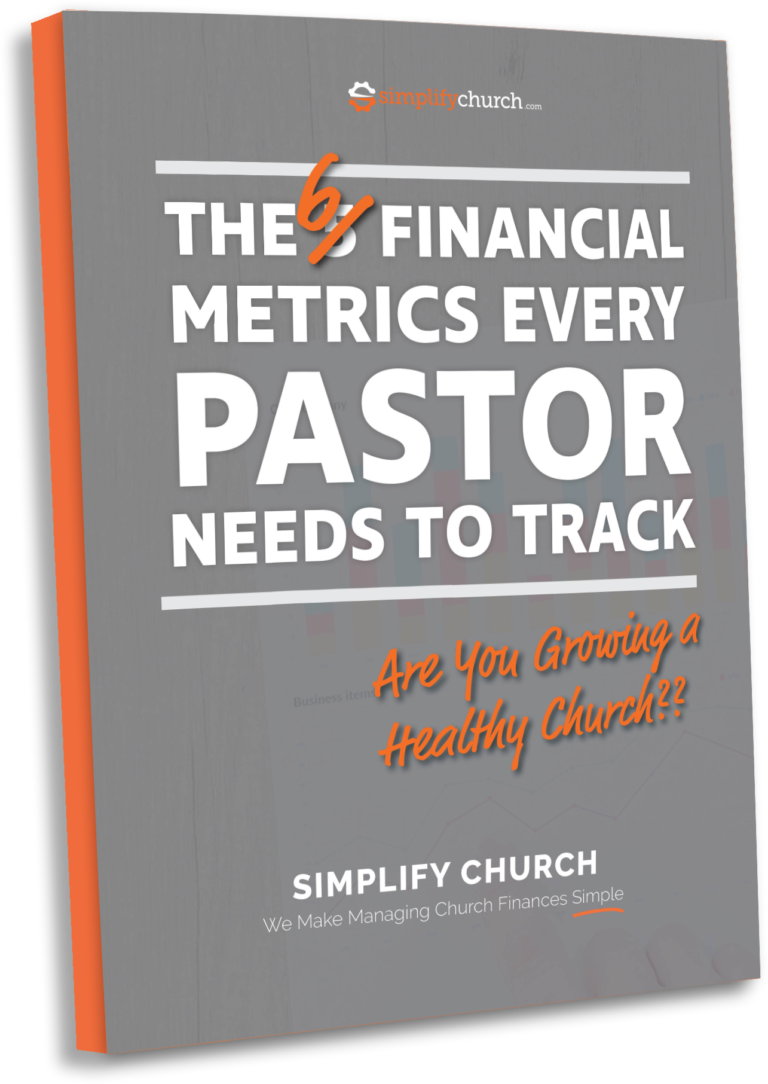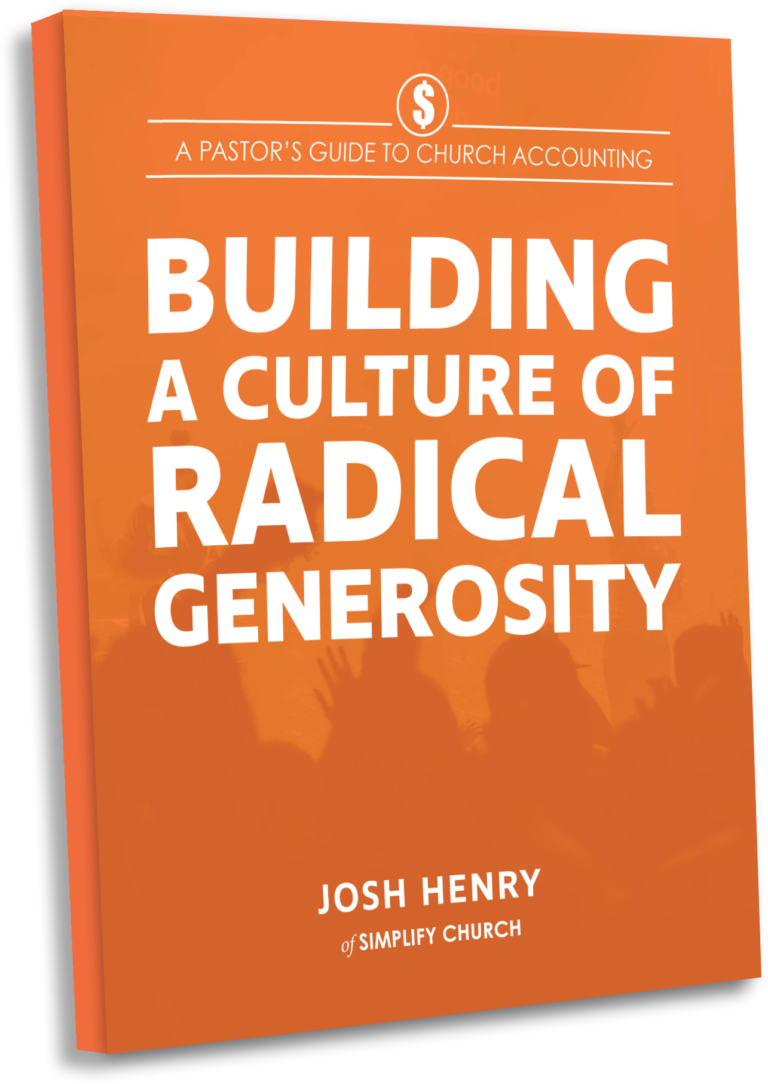One of these two things are true.
You’ve seen a shift in your giving amounts over the last few weeks. You haven’t seen a shift in your giving amounts, but you need a plan for the potential economic recession that is coming.
The fact is that the unemployment rate across the country is at an all-time high. A huge percentage of businesses, business owners and employees have been affected by this pandemic and we will see how those numbers play out for the economy over the next several months. This is why – regardless of what giving at your church looks like today – you need to have a plan for how you will handle a potential financial impact to your church.
Here are four keys to help you analyze and manage your budget in a time of crisis:
Have a good understanding of what your numbers look like
With any roadmap, unless you have a good understanding of where you’re currently at, you’ll have a really hard time coming up with a route that gets you to your destination. The same is true for your church budget.
In order to make smart budget decisions, you really need to have a good understanding of your current situation. This includes knowing your current numbers, trends and balances. If you don’t know your financial numbers, you really don’t know your church.
Yes, I will admit that there are some guys that focus too much on numbers and completely miss their mission. But what we see more often is the reverse – pastors that have lots of big ideas and passion, but just guess when it comes to church finances.
Without keeping a pulse on the financial health of your church, there is no way to make wise financial decisions, plan for the future, or determine how and where you can actually save the church money. Knowing your numbers is simply good stewardship.
What does this look like practically?
If you’re a Simplify Church Bookkeeping partner, this part is easy. Just by looking at the monthly reports we send you, you should have a good handle on how your church is doing financially. Additionally, your account manager is available to provide you more detailed information, answer questions and alert you to potential problem areas. We can also generate year-to-date (YTD) reports to help you better understand the story your numbers are telling. Using this service can save you lots of valuable time and effort!
Okay, but what if you’re trying to manage things yourself? Well the most important report you need to analyze is your Statement of Accounts (Profit and Loss) Report. This will show you in detail what you took in last month and what you spent. Some financial software solutions also offer the ability to match those numbers against your budget, so you can see how that your actual expenses are trending against your budgeted plan.
You will want to review these reports for the last couple months, as well as look at your YTD trend. If you budget on a calendar year, you can look at the amounts from your first quarter as well. Obviously a lot has changed in the past several weeks as far as giving and income goes, but you want to understand what your expenses and income looked like before the crisis, so you can begin tracking any changes to that trend. Ask yourself, “What story are these numbers trying to tell me?”
Analyze your critical expenses
There is a very real chance that giving and income will go down for your church, either now or in the coming months. The good news is that without meeting physically, there are quite a few operational costs that should go down as well.
Renters: If your meeting space is no longer open to public gatherings, you may be able to save on some rent expenses. Contact your landlord to discuss your options.
Property Owners: If you own your building, you can keep the thermostat down and not heat or cool the worship center.
Maybe you provide snacks, donuts and coffee during Sunday morning worship. While probably not a huge expense line in your budget, this is one place you can save a few dollars when cash flow gets tight.
Go through your expenses line-by-line and see what you do not need or any expenses/services that can easily be cut out. Perhaps you have some subscriptions to a service that you aren’t really using.
This is the time to determine which church budget expenses are critical and which ones are nice-to-haves. Understanding your critical expenses will help you analyze where savings can be found in your church budget.
Things like payroll, insurance, and other fixed ministry costs will be much more difficult to cut during this time. If you haven’t already applied for the Payroll Protection Program to help offset payroll costs, watch this video to see if this might be a good option for your church. (Yes, I know the funding ran out…but more funding will hopefully be available soon).
Pro Tip: if you own and have a mortgage on your building talk to your bank. They may have options available to you to help offset your payment during difficult times. Many banks offer interest only payments to churches during slow giving times. Remember, you never know until you ask.
Call your congregation to generosity
Talking about generosity is one of those areas many pastors shy away from. Now is not the time to neglect talking about generosity. In fact, it is a disservice to both your people and your organization if you don’t talk about generosity in this season.
It is much easier for us all to prioritize giving in seasons of abundance. Prioritizing giving to God in seasons of uncertainty and turmoil requires more faith and trust, but often leads to more opportunities to experience God’s faithfulness along with greater freedom and joy.
Remind people each week how they can give – via online giving, text to give, or by mailing a payment to your church. You can also make it easy for people to drop off payments if you don’t have online giving options. Let people know that you have setup a convenient drop box to drop off their tithe payments.
If you haven’t yet set up online giving at your church, now is the time to get started. And once people set up recurring giving, it makes it simple for them to continue to give generously (and it makes it much easier to predict your monthly income). Setting up online giving is quick and easy to do, especially if you use a system like Simplify Give.
Beyond explaining the various ways to give, part of the discussion needs to be a reminder of why giving is crucial to the church, especially during a time when you’re not meeting together corporately. Explain how the funds are being used and how the church still is able to continue to function and to meet tangible needs through the generous donations of members.
For a more in-depth discussion of this topic, we’ve put together a comprehensive guide on How to Talk About Giving & Create a Culture of Generosity in your church. You can access your FREE copy here.
Prepare a church emergency budget
Once you’ve analyzed your numbers and you know where things are at, it’s time to put together an emergency or contingency budget that will help you navigate through the next few months.
- What purchases were you planning to make in the next few months? Can any of those be delayed?
- Which expenses will help you move your church forward during this digital season?
- Which expenses are not serving your church right now?
As you evaluate your expenses, think through you church vision/mission and strategic goals. Which expenses will help your church continue to grow? Which items fund your growth engines? Do you need to reevaluate any of your growth engines or goals?
If you’re not sure why I’m bringing up the topic of growth engines and goals, check out this post on the seven “deadly sins” of church budgeting (and what to do about them) or this post on church budgeting 101.
Now put your emergency budget together. This is your financial plan to help your church not only survive this crisis, but to be ready for what comes next. You may never experience a dip in giving, but now you have a plan in place. As I’ve said many times, a budget is just a plan. But it’s an important one.
It is fear of the unknown and uncertainty that breeds stress. When you put a plan in place, you relieve stress and better position yourself and your church to ministry to people during this very uncertain time.
Look to the future
In this season, many people are feeling confused and afraid. What better way for the church to show up than as people who are not operating out of fear, but out of faith and as good stewards of the resources God has given them. When your church has a solid financial foundation, you can focus your time and energy on being a light and a beacon of hope in this season.
Not only that, you can position your church for whatever comes next. We don’t know when this season will end. What we do know is that once the guidelines on social distancing relax, there will be great need, but also an open door of opportunity. Will you be a church prepared to lead and serve and love through recovery and revitalization? Or will your church be focused on recovery yourself?
Here’s another question: Do you want to figure this all out on your own? Or do you want to partner with a team of church financial experts to help you manage your church finances and plan for the days ahead?
Our done-for-you payroll, bookkeeping and online giving services will take the financial burden off your shoulders and give you peace of mind. If you’re not confident in your numbers or you’re wasting valuable time trying to figure it all out, schedule you free consultation call today.
Because this is also true: Taking time to make wise strategic and financial decisions now will help you navigate the days, weeks and months to come.





